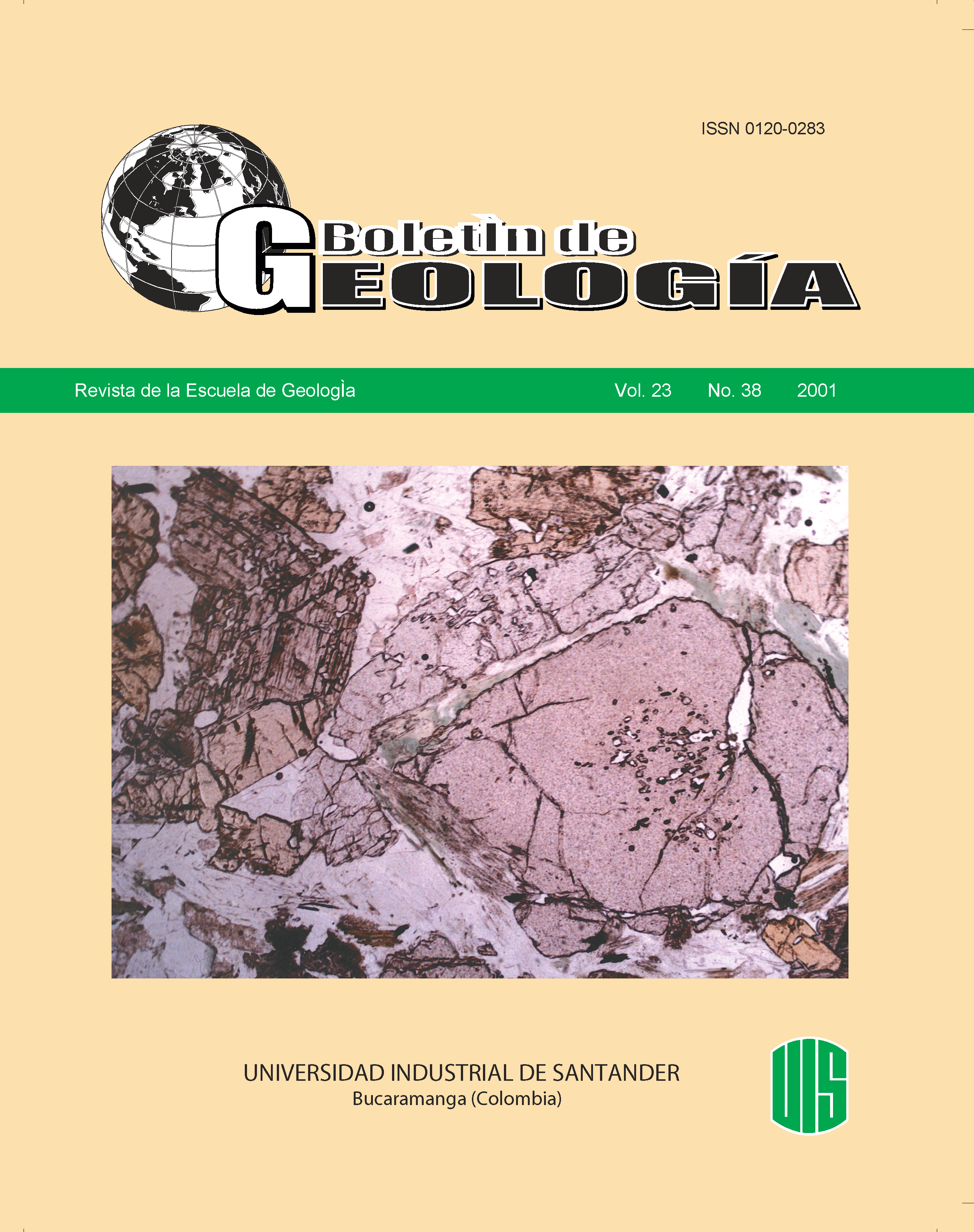Estudio de los paleofluidos en la Formación Silgará y su relación con procesos de deformación. Sector Aratoca-Pescadero (SW del Macizo de Santander).
Published 2001-10-02
Keywords
- Metamorphism,
- fluid inclusions,
- shear band,
- Silgará Formation
How to Cite
Abstract
The Silgará Formation that crops out in the Pescadero-Aratoca area presents a thermal structure defined by the metamorphic zones of the sillimanite, staurolite-distene, garnet and biotite. A band of approximately 120 m in width, located in the boundary between the staurolite-distene zone and garnet zone, presents a high amount of hydrothermal veins (boudinated) parallel to the regional schistosity. This fact, along with another deformation structures (isoclinal, recumbent folds, etc.), suggests the presence of an important shear band that favored the circulation of fluids, which was developed during an extensive stage, temporally associated to the exhumation of this metamorphic unit.
The microthermometric studies in fluid inclusions (IF) in veins, mainly compossed by quartz, let to identify six hydrothermal events that affected the Silgará Formation, during its retrograde stage. Compositionally, these paleofluids can be gruped in aquose-salines (H2O+NaCl) and complexes (H2O+NaCl+CO2+CH4+/N2+H2S?).
